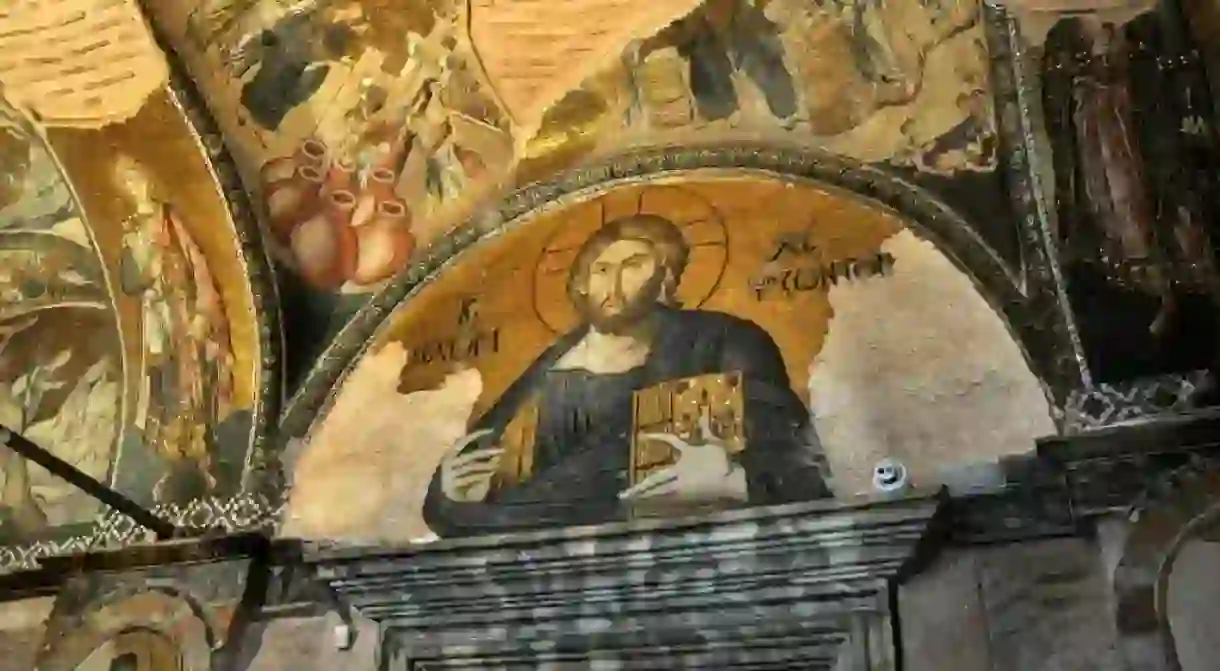Priceless Byzantine Mosaics In Istanbul's Churches

Istanbul, once called Constantinople, plays host to a number of churches that date back to the Byzantine Empire. Though all the churches have their own beautiful features, there are two in particular that blow the others out of the water: mainly for their breathtaking mosaics. Hagia Sophia is the most well known, and for good reason – its mosaics are spectacular. However, the more esoteric Chora Church also boasts a multitude of stunning pieces that invoke the Byzantine Era to a tee. Here’s a closer look at these homages to this city’s incredibly dense history.
Chora Church
Mosaics in Chora Church are grouped together in the inner and outer narthex. The majority of mosaics in the inner narthex present the life of Mary. Mosaics of the outer narthex, on the other hand, present the life and miracles of Jesus Christ. The main site is plain and there is actually only one mosaic there. It is advised you visit the Chora Church with a private tour guide so that you get a better understanding of the mosaics, as they are not chronologically aligned.
There are a number of highly valuable frescoes in the tomb chapel section, which is called Parekklesion. Here frescoes depict the day of the Apocalypse and Theodoros Metochites, who is the patron of Chora Church, is buried here.

Renaissance of Byzantine Art
Chora Church was historically the center of a large Byzantine monastery complex. The only surviving building from the complex is the Church, which is dedicated to Jesus Christ. Breathtaking mosaics found in the Chora Church are considered to be the last sparks of Byzantine art. Some historians claim that the artistic breakthrough at Chora Church signified the Renaissance movement that emerged from the collapsing Byzantine Empire.

Hagia Sophia
Hagia Sophia, almost 1,500 years old and having survived through wars and destruction, is the most well-known and visited historical monument in Istanbul. The mosaics of Hagia Sophia are certainly world renowned, but there’s actually less to see. Compared to Chora Church, Hagia Sophia fairs worse when it comes to the headcount of masterpieces. Though the mosaics in Hagia Sophia are spread throughout the church, the ones located in the upper gallery are simply arresting.

Imperial Gate mosaics in the former basilica Hagia Sophia of Constantinople (Istanbul, Turkey) The emperor Leo VI the Wise is bowing down before Christ Pantocrator. In medallions: on the left of Christ, the Archangel Gabriel; on his right, Mary. / ©Myrabella/WikiCommons
Deisis
The Deisis stage, marking the beginning of the Renaissance in East Roman painting, can be found on the western wall of the Northern Gallery. John the Baptist on the right side and the Virgin Mary on the left, with Jesus Christ in the middle, can be seen in the portrayal. It describes the prayer of the Virgin Mary and John the Baptist to Jesus Christ for the mercy of mankind during the Last Judgement. All three figures represent the characteristics of Hellenistic Era portrayal art. Dynamism and choices of color make it a unique piece. It is one of the best pieces in which the main principles of ancient Byzantine period art are reflected. The mosaic dates back to the 13th century

Justinian and Constantine the Great
Hagia Sophia’s most prominent figured mosaic is located in the inner narthex, on the Southern vestibule door. This mosaic was found during a repair process that was held by the Fossati brothers in 1849. The base of the symmetrical mosaic panel is comprised of gold leafs and shows the Virgin Mary on a backless throne with the words meter and theou engraved on either side, which translates to ‘Mother of God’ or ‘God-Bearer.’ Baby Jesus can be seen on Mary’s lap. The creator of the city, Emperor Constantine I, also known as Constantine the Great, holding an Istanbul model, is on her left. To the right of Mary is Emperor Justinian holding a model of Hagia Sophia. The mosaic panel dates back to the 10th century.

Constantine IX and Zoë
Emperor Constantine IX Monomakhos (1042-1055) and Empress Zoë are included in the mosaic board. The inscription over the Empress’ head states ‘Devoutly Religious Augusta Zoë‘. On either side of Jesus are his initials, the IC and XC monograms. This mosaic board symbolizes the donations made by the emperor’s family in order to restore Hagia Sophia. Empress Zoë was a distinctive figure in the history of Constantinople. According to historians, this mosaic was originally made in honor of Zoë’s first marriage to Romanus III. When the emperor changed, the face of the man in the mosaic was scrapped and changed to Constantine’s face – a bit of an ancient Photoshop effect. It dates back to the 11th century.














